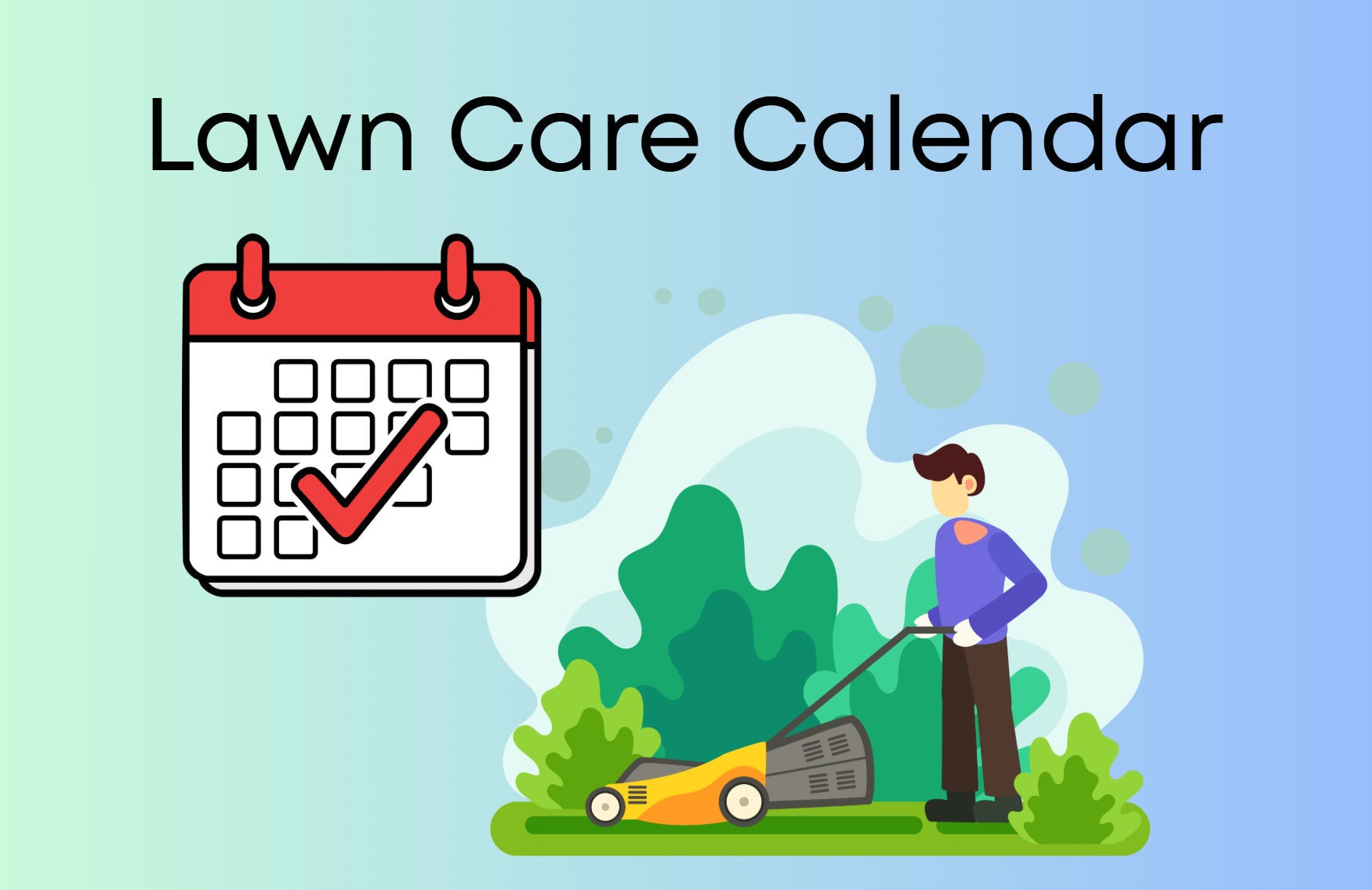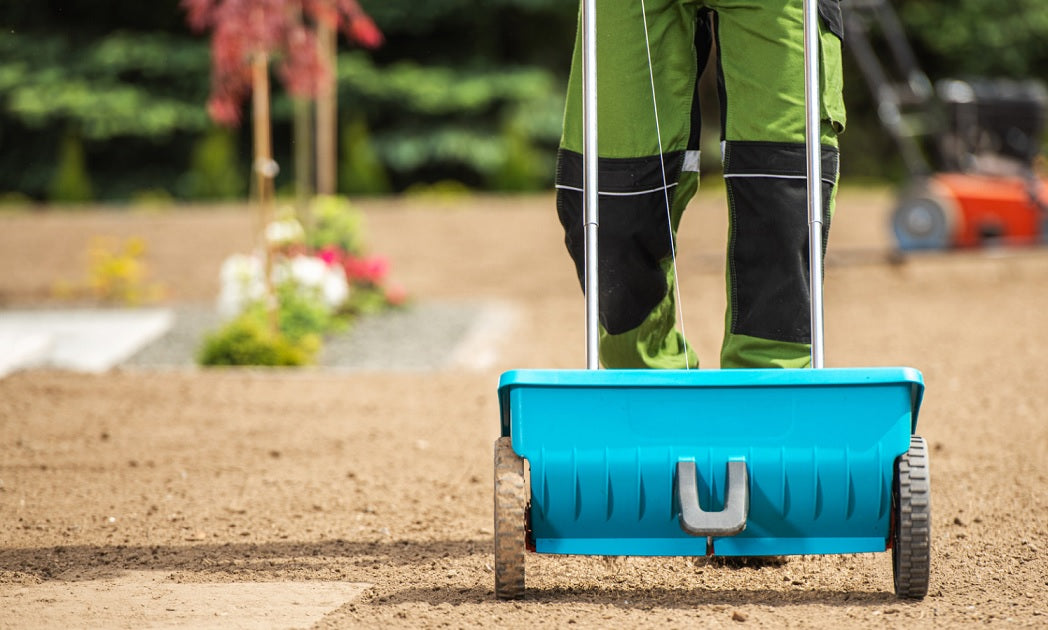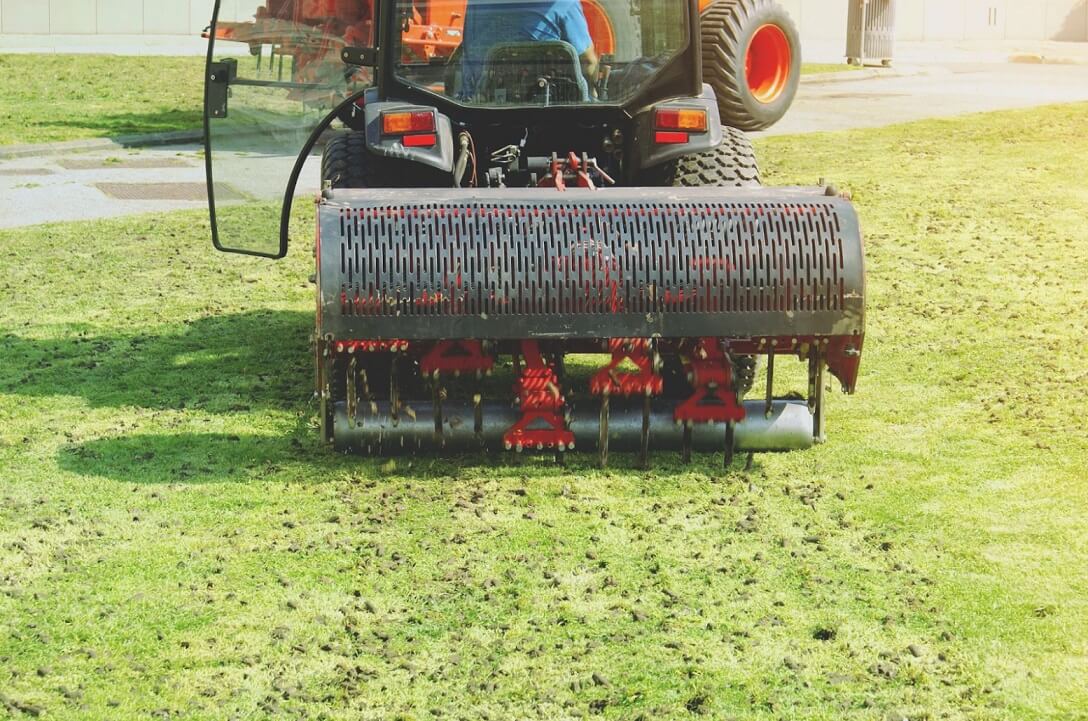We all want our lawn to look evenly green and soft underfoot. Yet, even after watering regularly, most of our fellow homeowners still end up with dry patches or muddy spots. The reason probably isn’t the effort; it’s that we’re not watering for the right amount of time.
On average, watering grass for 25 to 30 minutes twice a week is considered optimal. But does that work for all seasons or all lawns? Probably not. Every soil type absorbs water differently, and changing weather conditions affect how long moisture stays in the ground.
To learn the exact watering duration for your lawn, go through this guide. You will find detailed answers on how much water grass needs, how to calculate the right run time, and how different factors (soil, grass type, and season) change what “enough” means for the lawn.
The Science of Watering Grass
Water is called the source of life because it governs the growth and survival of nearly all living things; grass is no exception. How deeply and how consistently your grass receives water determines whether it grows dense and green or turns dry and brittle.
Root Depth and Water Absorption
As you might know, grass absorbs water through its roots, but only when that moisture reaches below the surface.
When water penetrates deeply, roots follow that moisture downward, creating a stronger and more drought-resistant lawn. Whereas, shallow watering keeps roots near the topsoil; they are more vulnerable to heat and drought.

Water Movement and Retention
Every lawn’s ability to hold water depends on how fast water seeps through the ground, a concept known as infiltration. If water sinks too slowly, it may run off. If it drains too quickly, roots can’t absorb enough before it’s gone. That infiltration varies from soil to soil, and we will cover that in later sections.
Evaporation and Timing
You may be watering the right, but that goes to waste when applied at the wrong time. For example, midday is considered one of the worst times to water. Heat accelerates evaporation and reduces the moisture that was meant for the roots. Likewise, evening watering keeps lawns wet overnight, encouraging fungal diseases.
In contrast, the best time to water grass is early morning (around 5-10 a.m.), when the air is cooler, the sun is low, and evaporation is minimal.
How Much Water Does Grass Need?
Water is essential, but too much or too little both damage lawn health. Grass needs to be watered in the right amount; enough to reach the root zone without causing runoff or waterlogging.
Research from the University of California Agriculture and Natural Resources and the Environmental Protection Agency (EPA) suggests that lawns require about 1 to 1.5 inches of water per week, including rainfall. The exact amount can vary slightly with season, grass type, and soil.
To supply this 1 to 1.5 inches of moisture, you’ll need to water your lawn two or three times a week, depending on your sprinkler’s output and the set duration.

How to Calculate Lawn Watering Duration?
The watering duration varies for every lawn, depending on your sprinkler system. You can carry out a simple “can test” to determine the run time for sprinklers:
Place small containers around your lawn
Use 5 to 6 side cans (possibly cat food cans) and spread them evenly across a sprinkler zone. Make sure they cover both the edges and the center areas for even measurement.
Run your sprinklers for 15 minutes
Turn on the sprinklers in that zone and let them run under normal conditions. Don’t change the water pressure or spray angle.
Measure the water in each can
After 15 minutes, use a ruler to measure how much water is in each container. Write down the numbers and find the average depth. Note this value as d (in inches).
Evaluate the Sprinkler Output/Precipitation Rate
Since you ran the sprinkler for 15 minutes (which is one-quarter of an hour), multiply the obtained depth by 4 to get your sprinkler’s precipitation rate per hour. The general equation is:
Sprinkler Precipitation Rate (in/hr)=depth × 60/time
We suggest rounding it off to the nearest 0.5 in/hr for simplicity.
Set a Schedule for Watering
Now that you have your sprinkler’s precipitation rate, the next step is deciding how much water you want to apply weekly. Most lawns need 1 to 1.5 inches of water per week. Let’s consider a target of 1 inch per week.
The total watering duration can be calculated as:
Watering Duration (minutes per week) = Target Water (inches) / Sprinkler Rate (in/hr) × 60
So, if your sprinkler rate is 0.5 in/hr:
Watering Duration = 1/0.5 × 60 = 120 minutes per week
You may choose to cover this total in a single deep session or split it into two or three shorter sessions. The latter options are recommended.
Here’s a table that might help figure out the session time based on sprinkler output.
|
Sprinkler Rate (in/hr) |
Total Weekly Time (min) |
2 Sessions/Week (min) |
3 Sessions/Week (min) |
|
0.5 |
120 |
60 |
40 |
|
1.0 |
60 |
30 |
20 |
|
1.5 |
40 |
20 |
13.5 |
|
2.0 |
30 |
15 |
10 |
|
2.5 |
24 |
12 |
8 |
Factors that Influence Grass Watering Needs?
On average, watering 25 to 30 minutes twice a week keeps most lawns healthy by delivering about 1 to 1.5 inches of water per week. However, the research shows that this value shifts considerably depending on soil type, grass type, and seasonal changes.
Soil Type
Soil type is one of the most influential factors, determining how long to run water sprinklers:
Clay soils absorb water very slowly but hold it for a long time. So, it’s recommended to break watering into shorter cycles to prevent runoff, usually two or three short sessions spaced 30–60 minutes apart. This is called the cycle-and-soak method. Such practice needs to be adopted once a week in summer.
Sandy soils are the opposite. They drain fast and lose water quickly through percolation. Lawns grown on sandy soils need longer watering durations or an extra weekly session. For such soils, three sessions for 15 minutes each are enough.
Loam soils, which contain a balanced mix of sand, silt, and clay, absorb water evenly and retain it efficiently. The standard 25-30-minute session, twice a week, is the right balance for these lawns.

Grass Type
Grass species also change how much and how often lawns should be watered.
Cool-season grasses (such as tall fescue, Kentucky bluegrass, and perennial ryegrass) require 20-25% more water during summer because their root systems are shallower and their transpiration rate increases with temperature. They may need up to 2 inches of water per week in peak summer to maintain color.
Warm-season grasses (such as Bermuda, Zoysia, and St. Augustine) are more heat-tolerant and develop deeper root systems. These lawns can thrive with less frequent but deeper watering, around 1 inch per week, even in summer.
Season
The season’s influence is on evaporation rates, rainfall, and how actively your grass grows. Here’s how you need to adapt for seasonal changes:
- Spring (March - May): Root growth is active, and research suggests watering about 50–70% of the summer rate.
- Summer (June - August): Evaporation and turf water demand peak. The optimal time is 80–110 minutes per week for warm-season and 105-115 minutes per week for cool-season lawns at a sprinkler output of 1 in/hr.
- Fall (September - November): As temperatures drop, reduce watering to about 50% of the summer total.
- Winter (December - February): Turn off automatic sprinklers and water only occasionally during extended dry periods.
How to Tell If You’re Watering Correctly
So you’ve set up a schedule and run your sprinklers. But if your lawn still doesn’t look right, the issue is likely either underwatering or overwatering.
Signs of Underwatering
Symptoms of underwatering include:
- Footprints get visible: When you walk across the lawn and the blades don’t spring back, the turf lacks water.
- Color turns dull: Grass loses its vibrant green and starts showing a bluish tint before drying out.
- Cracked soil: Try pushing a screwdriver into the ground. If it’s difficult, the soil is too dry.
- Curling blades: Grass blades may fold or curl inward when the plant cannot sustain normal turgor pressure due to water shortage.

Signs of Overwatering
Watering too much is just as damaging. Here are the common indicators:
- Spongy ground: If the soil feels squishy underfoot, it’s oversaturated.
- Puddles or runoff: Water pooling on the surface means the soil has absorbed all it can.
- Mushrooms or moss growth: Excess moisture creates conditions for fungal activity and algae.
- Persistent thatch and weeds: Heavy watering prevents organic breakdown and encourages shallow-rooted weeds.

Conclusion
Water your lawn with the right amount, whatever duration or number of sessions it requires, based on your own sprinkler output. But watering is just one part of the lawn care guide. It works best when paired with proper mowing, balanced fertilization, and seasonal maintenance.
At Segway, we believe lawn care shouldn’t feel like a chore. Our robotic lawn mowers take out the hectic and tiresome job of mowing, giving homeowners a perfectly trimmed lawn without the manual effort.
FAQs
How often should I water warm grasses?
Warm-season grasses are water-tolerant and more drought-resistant. They can thrive with deep watering that allows the soil to stay moist about 6-8 inches deep. For most lawns, 20 minutes per session, twice a week, is sufficient.
How frequently should I water cool grasses?
Cool-season grasses require 20-25% more water than warm-season types, especially during summer when evaporation is high. They need to be watered up to three times per week, with each session lasting 15-20 minutes.
How much time do I need to spend watering my lawn?
Research shows that lawns need 1 to 1.5 inches of water per week, including rainfall. This requirement can be met with two watering sessions of 25-30 minutes each for an average sprinkler output of 1 inch per hour. However, the exact session time may be evaluated by using the procedure we described in the article.
More Blog
When is the Best Time to Plant Grass Seed?
Every lawn owner is eager to get rid of those bald patches and make the lawn lush and green from every corner. But you can’t just grab grass seeds and plant them whenever you want. Beginners often don’t know the...
Summer Lawn Care Tips: Smarter Lawn Care for a Better Season
Summer's finally here. A time when the days are long, the sun is high, and the sweet smell of freshly cut grass hangs languidly in the air. For many of us, a lush, green lawn is the centerpiece of summer,...
Month-by-Month Lawn Care Calendar for the US
Lawns are sensitive, so you have to do everything at the right time, whether mowing, applying fertilizer, or watering. Otherwise, you will end up ruining your lawn while trying to make it healthier. Beginner gardeners and new lawn owners often...
How to Overseed a Lawn in Spring?
Does your lawn look thin and patchy? Many people would have suggested overseeding it in spring. But you’re still confused about how to complete that process. It’s not just sprinkling some seed on the soil and hoping water will do...
When To Fertilize Your Lawn In Spring
The first time you fertilize your lawn in spring can set up healthy, lush growth for the entire year. However, getting the time right is essential to ensure excellent results. You might be wondering how to figure out the perfect...
Should You Aerate Your Lawn in Spring
Planning to aerate your lawn this season, but unsure because of the mixed views on spring aeration? Many homeowners face the same confusion. Some say spring works fine, while others warn against it, which makes the decision harder than it...






Share: